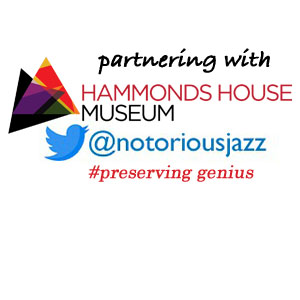
Daily Dose Of Jazz…
Harry Roy was born Harry Lipman on January 12, 1900 in Stamford Hill, London, England, and began to study clarinet and alto saxophone at the age of 16. He and his brother Sidney formed a band which they called the Darnswells, with Harry on saxophone and clarinet and Sidney on piano. During the 1920s they performed in several prestigious venues such as the Alhambra and the London Coliseum, under names such as the Original Lyrical Five and the Original Crichton Lyricals. They spent three years at the Café de Paris, and toured South Africa, Australia, and Germany.
By the early 1930s, Harry was fronting the band under his own name, and broadcasting from the Café Anglais and the Mayfair Hotel. In 1935 he married Elizabeth Brooke, daughter of the white Rajah of Sarawak, with whom he appeared in two musical films, Rhythm Racketeer and Everything Is Rhythm.
During World War II, he toured with his band, Harry Roy’s Tiger Ragamuffins. He was at the Embassy Club in 1942, and a little later, toured the Middle East, entertaining troops. In 1948, Roy traveled to the United States but was refused a work permit, so returning to Britain, he reformed his band and scored a hit with his recording of Leicester Square Rag.
By the early 1950s the big band era had come to an end and his band split up, sending him drifting in and out of the music scene. That decade he ran his own restaurant, the Diners’ Club until it was destroyed by fire. By 1969 Harry returned to music, led a quartet in London’s Lyric Theatre’s show Oh Clarence and his own Dixieland Jazz Band residency during the summer at Sherry’s Dixieland Showbar in Brighton, but by then he was in failing health. Clarinetist and dance band leader Harry Roy passed away in London on February 1, 1971.
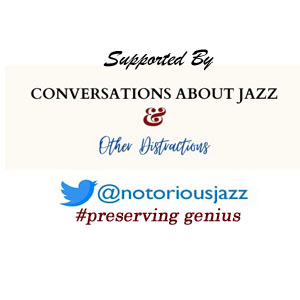
More Posts: bandleader,clarinet,history,instrumental,jazz,music
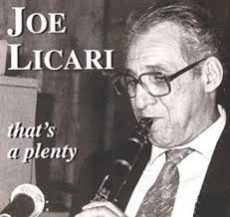
Daily Dose Of Jazz…
Joe Licari was born on January 10, 1934 in Brooklyn, New York and studied with Bob Wilber. His influences were Benny Goodman, Frank Teschemacher, Pee Wee Russell, Johnny Dodds, Sidney Bechet, and Jimmie Noone, using some of their ideas to find his own voice.
Known as an especially “hot” player with an exuberant and always emotive attack, Licari has worked along side of Roy Eldridge, Wild Bill Davison, Conrad Janis, Big Chief Russell Moore, Connie Kay, Bob Haggart, Vic Dickenson, Pee Wee Erwin, Doc Cheatham and the vocalist Julie Wilson. He’s also appeared in films, on television and radio shows and in clubs, sometimes standing in for Woody Allen.
As a leader, he recorded three albums and dozens as a sideman working as a featured player on albums by The Red Onion Jazz Band, Julie Wilson, Big Chief Russell Moore, Herb Gardner, Dick Voigt’s Big Apple Jazz Band, Jim Lowe, Dorothy Loudon, and Betty Comora. As a member of the Grove Street Stompers, they were a prominent fixture for decades on Monday nights at Arthur’s Tavern in Greenwich Village.
Clarinetist Joe Licari continues to record and perform at various clubs around New York City with The Speakeasy Jazz Babies, The Smith Street Society Jazz Band, Swing 39, Mark Shane. Delta Five, and Jon-Erik Kellso`s Hot Four.

More Posts: clarinet,history,instrumental,jazz,music
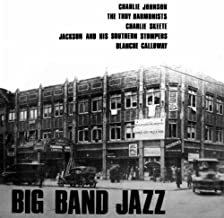
Daily Dose Of Jazz…
Mike Jackson was born on December 23, 1888 in Louisville, Kentucky. The details of his early life are not known, however, in 1921 he began composing songs for publisher Joe Davis. Soon after he became an accompanist playing piano for a number of early jazz and blues recordings, with Clara Smith, Alberta Hunter, Laura Smith, Thomas Morris, the New Orleans Blue Five, the Dixie Jazzers Washboard Band, Perry Bradford, and Buddy Christian.
He also recorded under his own name as Jackson and His Southern Stompers. With Morris, he worked in the vaudeville show The Wicked Age in 1927. He emigrated to Montreal, Canada in 1928, but returned to New York City in 1930, where he continued working as a composer.
His compositions included The Louisville Blues, written with Bob Ricketts in 1921 and recorded by W.C. Handy in 1923; Scandal Blues and Black Hearse Blues, both written in 1925; and Slender, Tender and Tall and Hey, Knock Me a Kiss, both of which were recorded by Jimmie Lunceford and Louis Jordan among others.
Pianist and composer Mike Jackson passed away on June 21, 1945 in New York City.

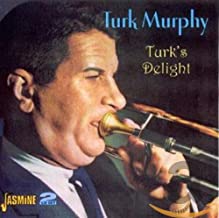
Daily Dose Of Jazz…
Turk Murphy, born Melvin Edward Alton Murphy on December 16, 1915 in Palermo, California. Serving in the Navy during World War II, during which he played and recorded with Lu Watters and Bunk Johnson. In 1952, he headed Turk Murphy’s Jazz Band, which included pianist Wally Rose, clarinetist Bob Helm, banjoist Dick Lammi, and tubist Bob Short, and had a residency at San Francisco North Beach’s Italian Village. The band appeared twice on The Ed Sullivan Show, in 1959 and 1965.
1979 saw Robert Schulz joining the band for eight years with various members joining as others departed. They included trumpeters Don Kinch and Leon Oakley; pianists Pete Clute and Ray Skjelbred; banjoist Carl Lunsford, tubist and trombonist Bill Carroll, singers Pat Yankee and Jimmy Stanislaw.
Murphy was the singer for the 1971 Sesame Street cartoon shorts, The Alligator King and No. 9 Martian Beauty, animated and produced by his friend Bud Luckey. Murphy arranged and performed on many of Luckey’s other Sesame Street animated shorts.
Murphy’s band played his nightclub, Earthquake McGoons, which opened in 1960 and moved three times before closing in 1984. He got an opportunity to play Carnegie Hall in 1987. Trombonist and bandleader Turk Murphy, who played traditional and Dixieland jazz, passed away on May 30, 1987 in San Francisco, California.

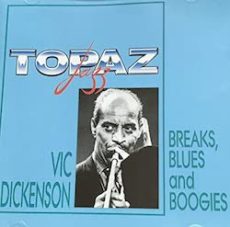
Daily Dose Of Jazz…
Joe Britton was born on November 28, 1903 in Birmingham, Alabama and following his student days under the guidance of Fess Whatley, he went to work with Bessie Smith who took him on the road from 1924 through 1926 as a member of her backing group, followed with the Fred Longshaw Orchestra and then the Bill Woods Orchestra. The next year, he jumped to Frank Bunch & the Fuzzy Wuzzies, most likely the most obscure name in the list of the groups he played for.
Settling in New York in the ’30s and immediately got into the fast-paced jazz scene working with Ellsworth Reynold’s Bostonians, Teddy Hill, the band of classic jazz drummer Kaiser Marshall, Charlie Johnson, Edgar Hayes, and the Vernon Andrade Orchestra. In the ’40s: he worked with Benny Carter from 1940-1941 and Dizzy Gillespie, while at the same time collaborating on older styles of jazz.
In the 1940s Britton worked and recorded with Jelly Roll Morton, Jay McShann, and Lucky Millinder in 1942. He would go on to be employed by Wynonie Harris showing up on a half-dozen of her R&B records, and also recorded with Sister Rosetta Tharpe.
He performed and recorded with pianist Earl Hines. The trombonist dabbled into orchestra arrangements and his work in this field is highlighted on the album Breaks, Blues and Boogies by fellow bone-man Vic Dickenson. retired from full-time professional playing in the 1950s, however, he gigged off and on into the Sixties, including a regular stint in a band led by saxophonist Wesley Fagan. Trombonist Joe Britton passed away on August 12, 1972 in New York City, New York.
More Posts: arranger,bandleader,history,instrumental,jazz,music,trombone


